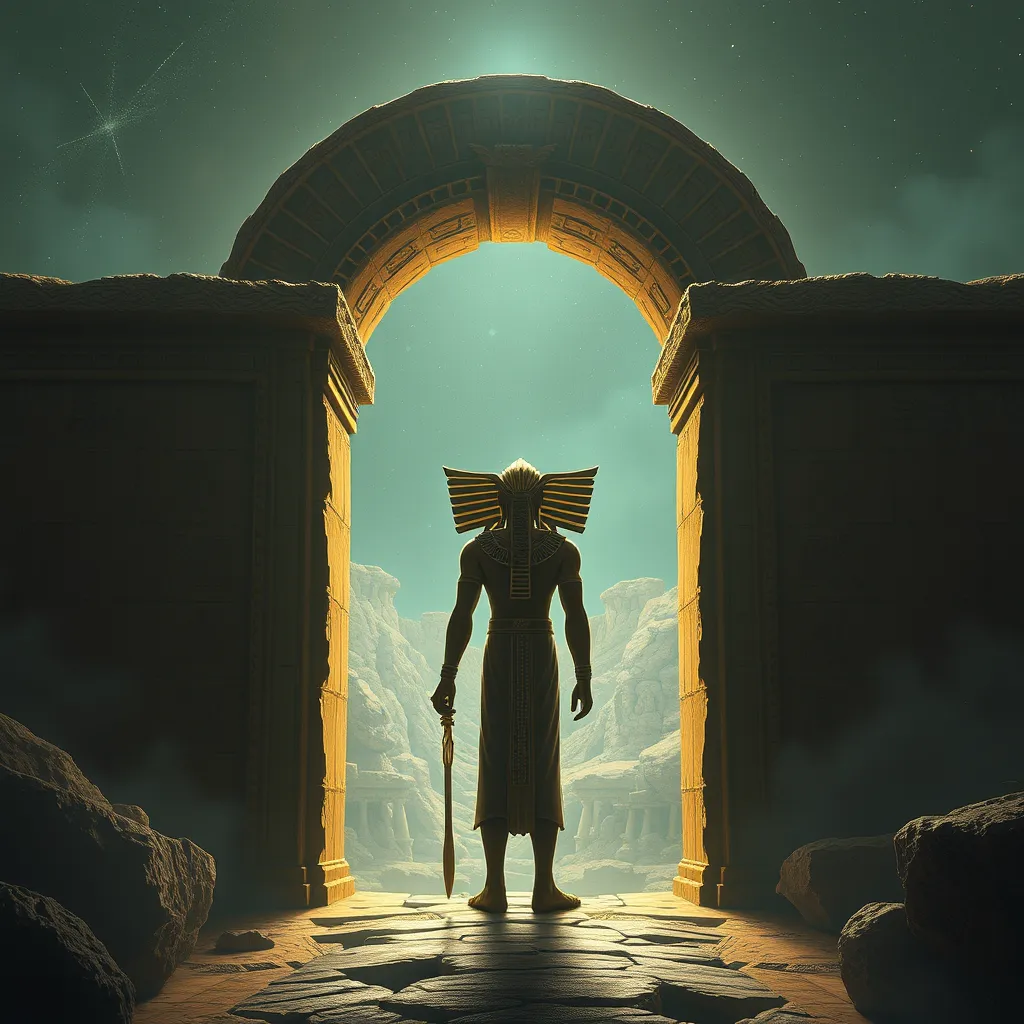The Duat: A Window into the Soul
I. Introduction to the Duat
The Duat, often referred to as the realm of the afterlife in ancient Egyptian beliefs, is a concept steeped in rich mythology and spiritual significance. It represents more than just a physical space; it embodies the journey of the soul after death and the trials it must face. This article aims to explore the Duat’s critical role in understanding the soul, its significance in ancient traditions, and its lasting impact on modern spirituality.
II. Historical Context of the Duat
The origins of the Duat can be traced back to the early dynastic periods of ancient Egypt, where it was first depicted in the Pyramid Texts, a collection of spells and inscriptions meant to guide the deceased through the afterlife. Over the centuries, the concept of the Duat evolved, influenced by changing beliefs and the sociopolitical landscape of Egypt.
- Origins in ancient Egyptian mythology: The Duat was initially viewed as a shadowy underworld, a place of darkness and mystery, inhabited by various deities and mythical creatures.
- Evolution through different dynasties: As Egyptian civilization progressed, the Duat transformed into a more complex realm with distinct regions, reflecting the intricate beliefs of the time.
- Key texts and inscriptions: Important works such as the Book of the Dead provided detailed accounts of the Duat, offering rituals and spells to assist the deceased on their journey.
III. The Structure of the Duat
The Duat is often described as a vast and intricate landscape that includes various geographical features and realms. Understanding its structure is essential for comprehending the spiritual journey that souls undertake.
- Description of the Duat’s geography: The Duat is depicted as having rivers, fields, and palaces, with each location symbolizing different aspects of the afterlife.
- Significance of various locations: Certain areas within the Duat, such as the Field of Reeds, were believed to be paradisiacal spaces where souls could enjoy eternal peace.
- Symbolic representations: Artistic depictions of the Duat often include vibrant imagery, serving as a way to communicate the beliefs and values of ancient Egyptians.
IV. The Journey through the Duat
The journey through the Duat is a central theme in ancient Egyptian spirituality. Upon death, the soul embarks on a perilous journey filled with trials and obstacles that test its worthiness.
- The soul’s journey after death: The deceased must navigate through various challenges, encountering deities and mythical creatures that may hinder or aid their passage.
- The role of Osiris: Osiris, the god of the afterlife, plays a pivotal role in this journey, overseeing the weighing of the heart ceremony that determines the soul’s fate.
- Importance of spells and rituals: The use of spells, such as those found in the Book of the Dead, was crucial for guiding the soul through the Duat and ensuring a safe passage to the afterlife.
V. The Soul in the Duat
In ancient Egyptian belief systems, the concept of the soul is multifaceted, comprising different elements that contribute to its essence and journey in the Duat.
- Understanding the soul: The Egyptians believed in a duality of the soul, consisting of the ka (the life force) and the ba (the personality or spirit).
- The duality of the soul: The ka remained with the body, while the ba was free to travel, highlighting the interconnectedness of life and death.
- Transformation of the soul: Through trials in the Duat, the soul undergoes a transformation, aiming for rebirth and eternal existence.
VI. Symbolism and Imagery in the Duat
The Duat is rich in symbolism and imagery, reflecting the beliefs and values of ancient Egyptian culture. Various symbols associated with the Duat serve as metaphors for the spiritual journey.
- Common symbols associated with the Duat: Items such as the ankh (symbol of life) and the scarab (symbol of rebirth) are prevalent in depictions of the Duat.
- Significance of deities and mythical creatures: Deities such as Anubis, the god of mummification, and Ammit, the devourer of souls, embody the complexities of the afterlife journey.
- Artistic depictions: Ancient artworks often illustrate the Duat’s landscape and its inhabitants, providing insight into the spiritual beliefs of the Egyptians.
VII. The Influence of the Duat on Modern Spirituality
The Duat’s legacy extends beyond ancient Egypt, influencing modern beliefs about the afterlife and spirituality.
- Impact on contemporary beliefs: The concept of the Duat has resonated with many who seek to understand life after death, contributing to various spiritual practices.
- Comparisons with other cultural views: The Duat can be compared to other cultural depictions of the afterlife, such as the Greek Hades and the Christian Heaven and Hell.
- Resurgence of interest: In recent years, there has been a renewed fascination with ancient Egyptian spirituality, with people exploring the wisdom of the Duat and its teachings.
VIII. Conclusion
The Duat serves as a profound window into the soul, reflecting the ancient Egyptians’ complex understanding of life, death, and the afterlife. Its significance as a realm of transformation and spiritual journey highlights essential aspects of ancient beliefs that continue to resonate today.
In conclusion, the Duat remains relevant in modern discussions about spirituality and the afterlife, inviting us to explore the rich traditions of ancient Egypt further. The journey through the Duat not only serves as a metaphor for the soul’s path but also encourages us to reflect on our beliefs and practices concerning life beyond death.




